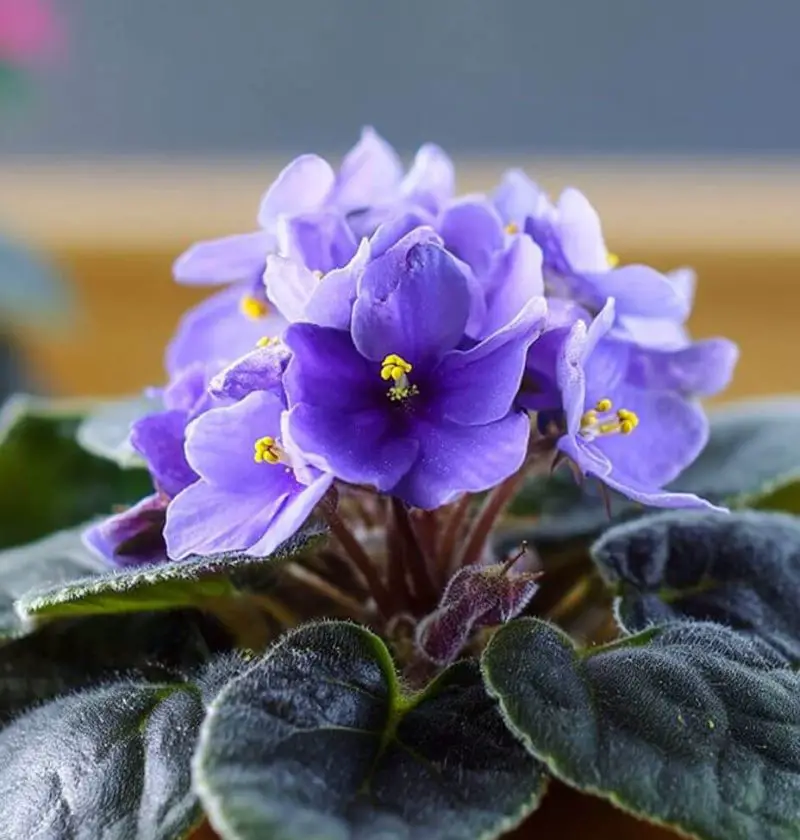I still remember the way my nana’s kitchen window looked on a rainy Sunday morning—lined with plump little African violets, all bursting with color like a row of velvet teacups. She didn’t fuss much with them, but goodness, they bloomed like they had something to prove. Lavender, deep purple, the occasional pink one… every bloom looked like it had just woken up from a spa day.
I used to think she had some sort of magic touch. But one afternoon, while helping her make tea, she spilled the beans with a wink: “It’s the Epsom salts, honey.”
Well, of all things.
Turns out, that little carton of Epsom salts sitting under her bathroom sink was her secret weapon—not just for soaking tired feet, but for keeping her violets happy and flowering all year long.
Why You’ll Love This Little Garden Hack
Here’s why this tip might just change the game for your African violets:
-
Boosts blooming without fancy fertilizers
-
Inexpensive & easy—just pantry staples!
-
Gentle on roots when used correctly
-
Safe for regular use once a month
-
Encourages lush, green foliage too
It’s a trick that’s stuck with me—and now I pass it along to anyone who’s ever looked longingly at their droopy, flower-less violet and wondered, What gives?
Let’s Talk Ingredients: What’s So Special About Epsom Salts?
First off, this isn’t just some old wives’ tale. Epsom salts are made up of magnesium sulfate, and that magnesium is essential for healthy plant growth—especially flowering ones like African violets.
Magnesium helps plants make chlorophyll, which is what turns sunlight into energy. Think of it like giving your violet a little metabolic nudge. More energy = more flowers. Simple as that.
Sulfur, the other half of the equation, plays a role in enzyme production and general plant health. It’s like a vitamin boost for your soil.
Tip from nana: Make sure you’re using plain Epsom salts. No added scents or bath oils—save those for your feet!
How to Use Epsom Salts for Blooming African Violets
Alright, here’s the good stuff. You don’t need a green thumb—just a gentle hand and a little patience.
-
Mix 1 tablespoon of plain Epsom salts into 1 gallon of water.
(Use room temperature water—cold water can shock those roots.) -
Once a month, use this solution to water your African violets instead of your usual water.
-
Pour slowly around the base—avoid splashing the leaves if you can.
-
Let the soil soak it in, but don’t overdo it. These little plants like their soil moist, not soggy.
-
Sit back and wait. Within a few weeks, you should start seeing brighter blooms and perkier leaves.
Save This Recipe
But Hold On—Don’t Make These Common Mistakes
Like anything, too much of a good thing can backfire. So let’s talk “don’ts” real quick:
-
Don’t overuse it. Stick to once a month. More isn’t better—it’s just more.
-
Don’t skip fertilizer. Epsom salts are a helper, not a substitute. Use a balanced African violet fertilizer as directed.
-
Don’t mix it too strong. Always follow the 1 tablespoon per gallon rule.
-
Don’t use cold water. I know I mentioned it already, but it bears repeating.
Keep Your Violets Happy: Other Tips from Nana’s Playbook
While we’re at it, here are a few gentle reminders to keep those blooms going strong:
-
Keep them in bright, indirect light—direct sun can scorch.
-
Avoid overwatering. A shallow saucer works well for bottom watering.
-
Use a room temperature watering routine.
-
Rotate the pot every couple weeks to keep the plant balanced.
-
And finally—don’t move them around too much. African violets like stability (don’t we all?).
Want to Experiment? Try These Simple Variations
If you’re the curious type (and I know some of y’all are!), here are a few ideas:
-
Add a drop of fish emulsion to the mix every other month for extra nutrients (yes, it’s stinky—but it works).
-
Use filtered water if your tap water is hard or heavily chlorinated.
-
Try a self-watering pot for more consistent moisture.
Storing & Using the Epsom Salt Mix
You can absolutely mix up a gallon and store it under the sink with a label. Just give it a gentle shake before each use. Room temp is best, and don’t use the same solution for more than a couple of months—it’s easy enough to mix up fresh.
A Little Love, a Little Salt, and a Whole Lot of Blooms
So that’s the story—one simple trick, passed down from a woman who could make just about anything grow on a windowsill.
If your African violets have been looking a little sad lately, try giving them a boost with this Epsom salt trick. It’s inexpensive, easy, and honestly… kind of fun. Like a little science project with petals as the reward.
And hey—if it works for you like it did for my nana (and for me), I’d love to hear about it. Leave a comment, share your plant stories, or ask any questions. We plant folks love to chat
Warmly,

